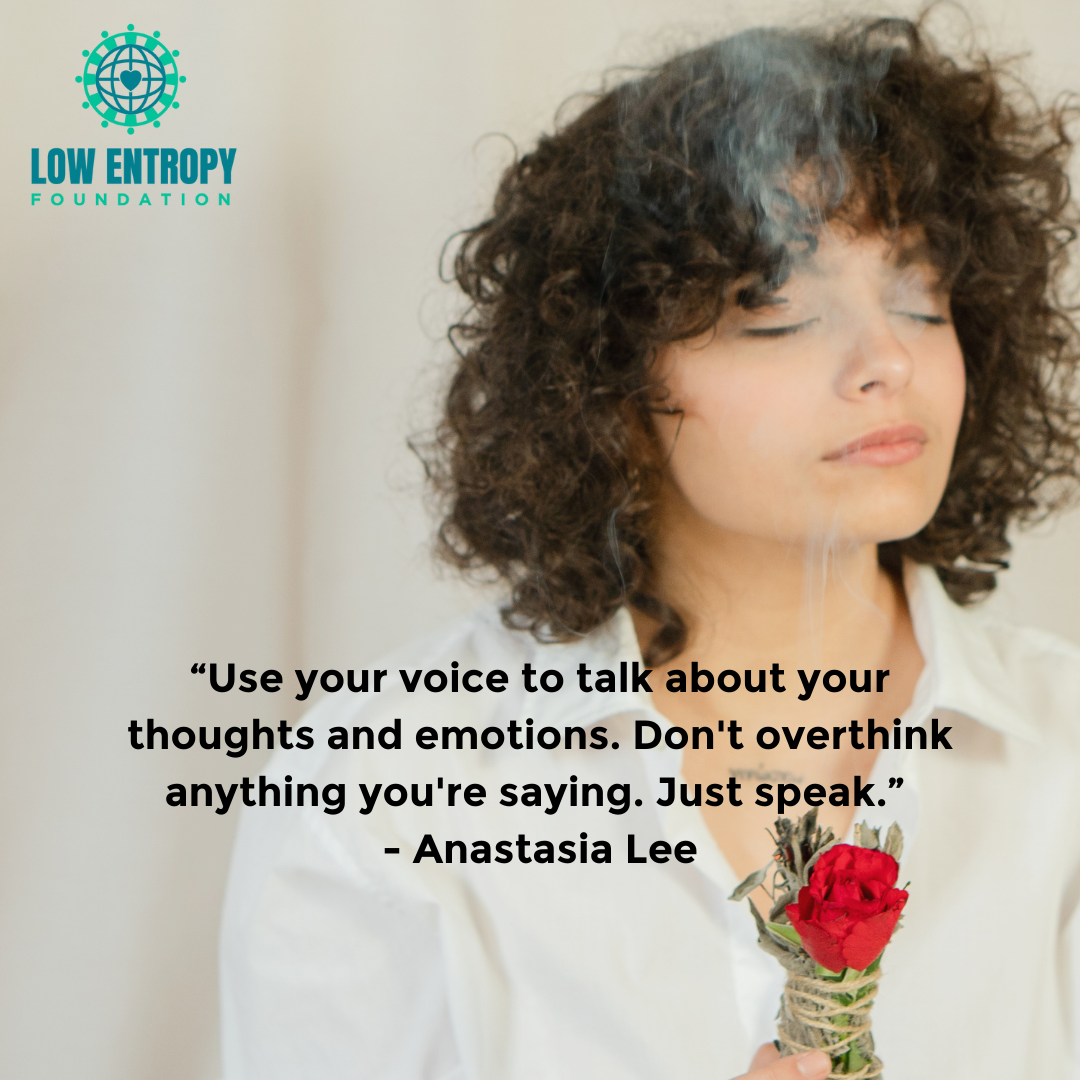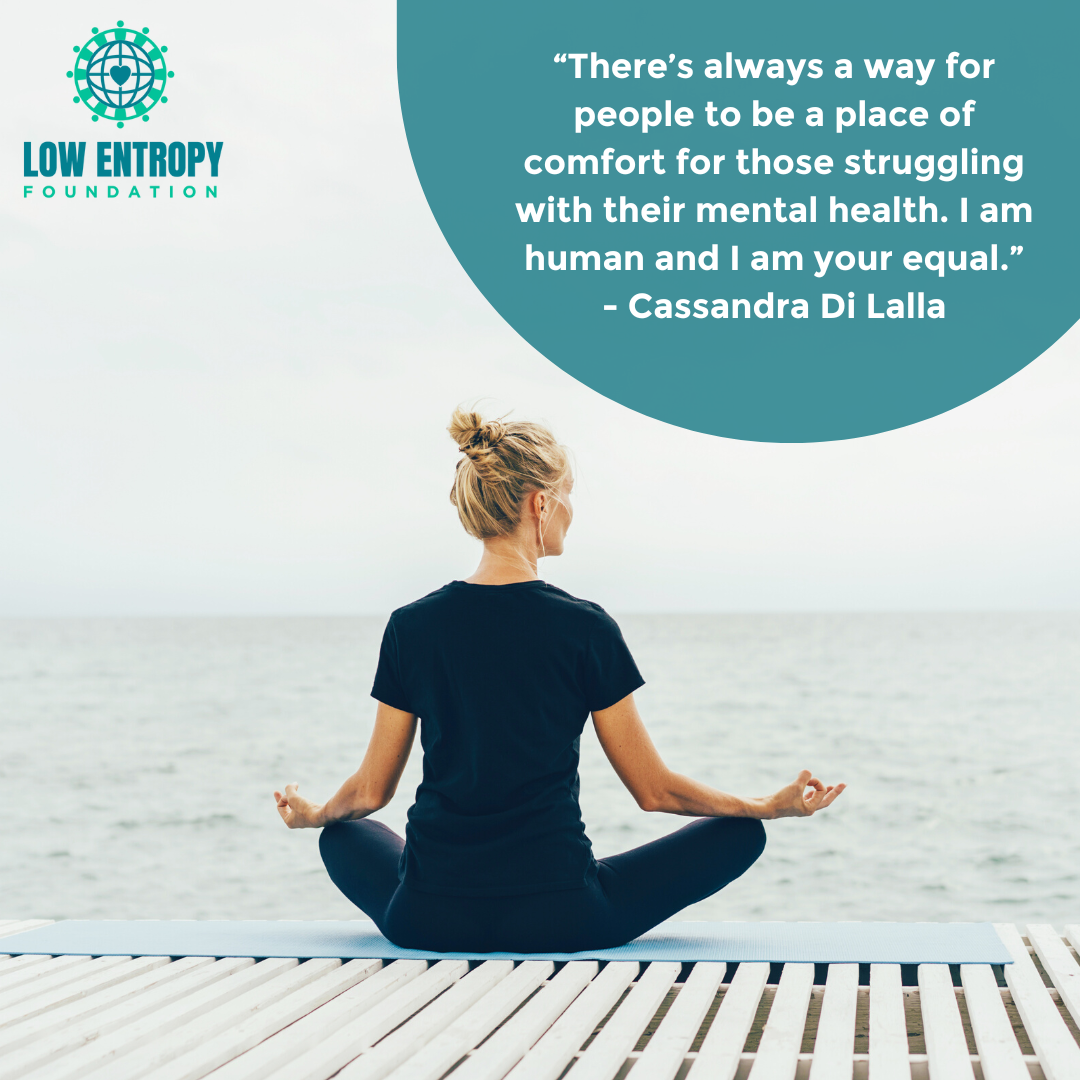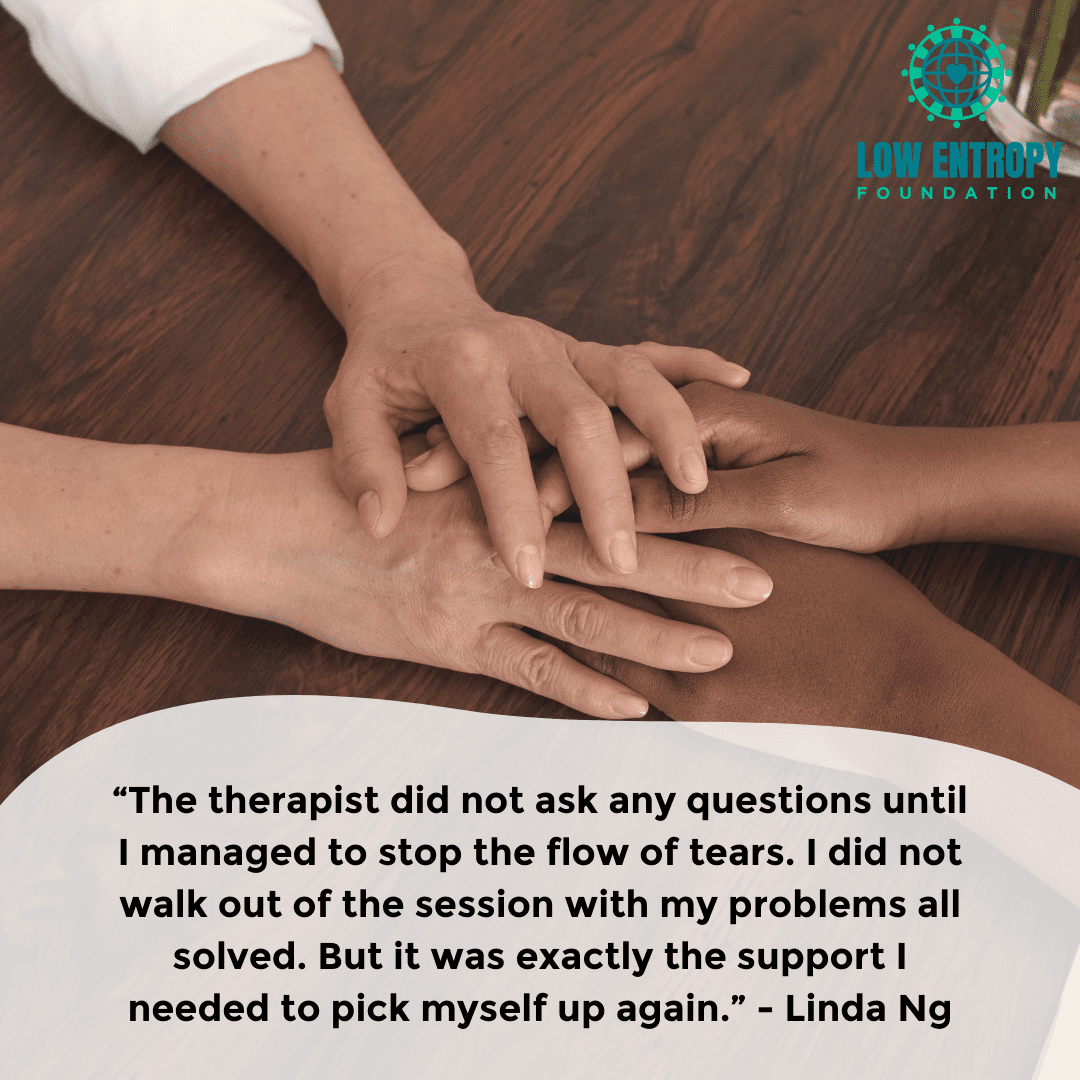Self-Therapy: An Introduction
October 20, 2021

Anastasia Lee (she/her/hers), Low Entropy Volunteer Writer
Therapy is expensive. Each session can cost between $60 and $250 or even more, potentially racking up thousands of dollars per patient per year. Although therapy is effective, it is not a solution for everyone, and there is no one-size-fits-all kind of therapy. Everybody’s psychological needs differ, and sometimes professional psychological treatment isn’t enough.
Depression and anxiety are becoming more and more common as psychological disorders, especially after a year-long global pandemic. Mental health decline is on the rise, peaking in the past decade, and it is worsening due to debilitating economic conditions. Losing jobs, homes and assets can be traumatic, as being stripped of your necessities can force you into survival mode. The cost of living is becoming more and more expensive. Considering these major challenges and dramatic changes in the environment, it is no surprise that depression and anxiety are becoming more prevalent in our society.
Self-therapy, which is any healing tool that provides mental alleviation and emotional support, has the potential to become the future of mental health therapy. It focuses on the individual becoming dependent on their cognitive and support systems, instead of relying on others for therapy. It is bringing back the power to the individual and creating a solid foundation for their mental health. It is not a replacement for therapy with a trained professional, but more so a way to cope with challenging, complex circumstances when one cannot afford therapy.
I must re-emphasize that self-therapy is not a substitute for therapy. It is a coping mechanism. There is no professional training required for self-therapy, and therefore it is not considered an form of medical therapy.
What is self-therapy?
Self-therapy is a potentially effective practice with all kinds of benefits: processing negative thoughts and emotions; coping healthily with trauma; rediscovering unconscious, shadow aspects; reflecting on your actions, habits and behaviors; keeping track of your progress and much more. Self-therapy isn’t limited to a specific set of practices. It is formed and shaped according to the needs and desires of the individual. Self-therapy is very much like self-care; it is for the mind and heart.
How is it an effective tool for coping with negative thoughts and emotions?
Self-therapy is a channel for self-expression and conscious processing. It brings unconscious and subconscious programming to the conscious surface. It is essential for working through trauma, which is often responsible for negative thoughts and emotions. Whether through journaling, voice messages, videos or other forms of self-therapeutic expression, it is a productive and constructive coping mechanism for releasing heavily suppressed thoughts and emotions. In this way, they do not remain trapped within the psyche, where they wreak havoc on our mental and emotional well-being.
How do I prepare for self-therapy?
- Intention-Setting: Before diving into self-therapy, evaluating your intentions for why you believe therapy is necessary and how you will undergo the process is essential for an effective session. Every session doesn’t have to be the same, and depending on the needs of the individual, the intentions can differ as desired. This intention-setting practice can be performed in various ways: writing down purposes in a journal, repeating them aloud in front of a mirror, sharing them with a trusted friend or family member, or expressing these intentions through art and music, to name a few.
- Creating a Safe Space: Your sanctuary can be created anywhere. Whether it’s your bedroom or outside in nature, being where no distractions or problems can reach you is the best place to be. It can be by yourself or with a friend or trusted partner, and it is encouraged to have someone assist you in the process if possible. You can put on music or surround yourself with the things you love and appreciate the most in life. Build your safe space as you like, and change your environment as needed.
- Practice Vulnerability: If you’ve spent years hiding who you truly are from the world, then it’s time to open up and express yourself, finally. Use your voice to talk about your thoughts and emotions. Don’t overthink anything you’re saying. Just speak. Detach from any judgments projected on you. Take it easy on yourself and ease away from being self-critical. It is okay to have flaws and imperfections, and practicing vulnerability requires accepting these aspects of yourself. Become more comfortable listening to your voice, feeling your emotions and hearing your thoughts.
- Ask Yourself Questions: When practicing self-therapy, it’s essential to guide yourself with the right questions. It is beneficial for you also to ask yourself questions to assist you with your healing process. Write down your own questions and answers throughout each session and, if needed, go completely off track and dive deeper into what needs confrontation. Every session is meant to be for your personal needs, so do exactly what you feel is best for you.
- Acquire the Right Tools: Self-therapy is relatively cheap and easy. The essential tools needed are a journal, pen and mirror. Of course, these aren’t requirements. Self-therapy can be talked through without notes, but having a mirror may help you connect with your body, language and ways of expression. A journal and pen may be useful for writing down things you want to remember in future sessions, while also tracking your progress and seeing what you need to work on and integrate.
—
My name is Anastasia. I am 22 years old, and I am from California. Ever since I was a kid, writing has been my passion because it is a channel of self-expression. With every piece of writing, I hope to build a collected masterpiece of art to share with the world.
GET INVOLVED
At Low Entropy, we believe changing the world starts with changing ourselves.
Founded in 2015, Low Entropy Facilitates conversations that encourage diversity and promote inclusivity.
We understand that life can be confusing at times. It can seem challenging and sometimes you may feel like no one really “gets you.” We offer an opportunity to connect with others who have the capacity to understand you.









